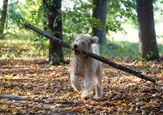What’s the Best Food for Goldfish?

Goldfish are among the most popular aquarium pets in the world, loved for their bright colors, peaceful personalities, and relatively low-maintenance care. But when it comes to keeping them healthy, one key factor often gets overlooked: their diet.
Feeding your goldfish the right food plays a huge role in their energy levels, coloration, digestion, and overall lifespan. With so many choices - flakes, pellets, vegetables, live food - it can be hard to know where to start. Let’s take a look at the best food options for goldfish so you can keep your finned friend both happy and healthy.
Goldfish Are Omnivores
Goldfish are natural omnivores, meaning they eat both plant and animal matter. In the wild, they feed on algae, plant debris, insects, larvae, and small crustaceans. For pet goldfish, the goal is to replicate that variety as much as possible. Feeding them a one-note diet (such as flakes only) can lead to nutritional deficiencies, poor coloration, and issues like constipation or swim bladder problems. A balanced, varied diet is key.
Flakes: Convenient but Not Complete
Flake food is the go-to option for many goldfish owners. It’s easy to find, affordable, and simple to serve. However, flakes lose nutrients quickly once they hit the water and tend to float, which may cause your goldfish to gulp air while eating. This can lead to bloating or digestive discomfort. Flakes can be part of the diet, but they shouldn’t be the only food you offer.
Pellets: A Stronger Staple
Pellets are often a better staple than flakes. Available in floating or sinking varieties, many goldfish-specific formulas offer a more nutrient-dense option. Sinking pellets are typically preferred as they encourage bottom-foraging behavior (which is more natural for goldfish) and help reduce the risk of air ingestion. When choosing pellets, look for high-quality brands that list ingredients like fish meal, spirulina, or shrimp meal near the top. These ingredients support strong coloration, immune health, and digestion.
Veggies: A Healthy Addition
Adding vegetables to your goldfish’s diet is a great way to boost their nutrient intake and support digestion. Blanched peas (skins removed), spinach, lettuce, zucchini, and cucumber are all goldfish-friendly options. Peas, in particular, are helpful if your goldfish is showing signs of bloating or swim bladder trouble. Offer veggies a couple of times a week in small amounts, and remove any uneaten pieces to avoid polluting the tank.
Protein Treats: Occasional and Safe
Protein-rich treats like brine shrimp, bloodworms, daphnia, and tubifex worms are excellent once or twice a week, especially for growing fish or those recovering from illness. These can be offered fresh, frozen, or freeze-dried. Frozen is often the safest choice, as it reduces the risk of introducing parasites into your aquarium.
Avoid Overfeeding
One of the most common mistakes in goldfish care is overfeeding. Goldfish have big appetites, but too much food can cause health issues and poor water quality. Feed small amounts two to three times a day - only what they can eat in 2 to 3 minutes. Always remove leftovers to keep the water clean and safe.
The Bottom Line
The best diet for goldfish is varied, balanced, and nutrient-rich. Aim for a core of high-quality sinking pellets, with occasional flakes, blanched vegetables, and protein treats. With the right nutrition and a bit of care, your goldfish can thrive, grow beautifully, and live a long, healthy life.

A proud mama to seven dogs and ten cats, Angela spends her days writing for her fellow pet parents and pampering her furballs, all of whom are rescues. When she's not gushing over her adorable cats or playing with her dogs, she can be found curled up with a good fantasy book.
More by Angela Vuckovic


























